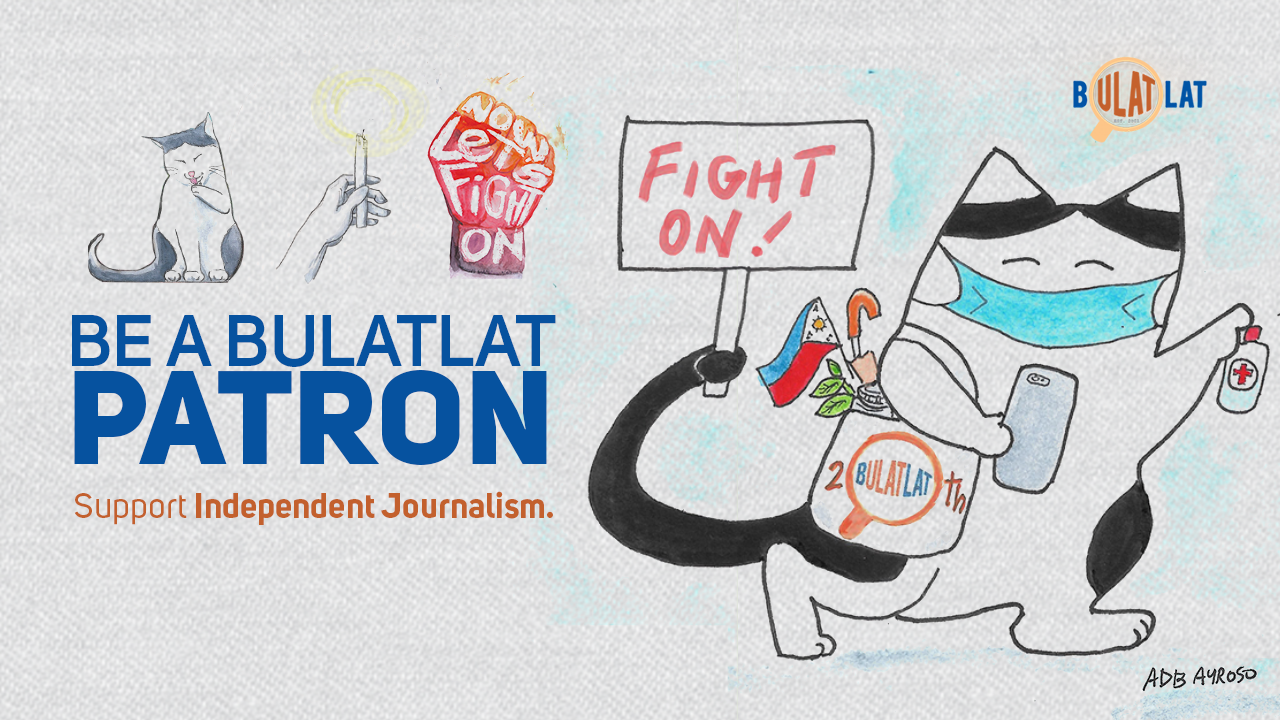
By MAX SANTIAGO*
Bulatlat.com
MANILA — For this year’s SONA, BAYAN created the “Doble Kara” effigy of President Ferdinand Marcos Jr. The effigy represents the duality of the same Tallano gold coin.
One side of the coin represents the President’s campaign promises. Marcos Jr. with his left hand flashing the “V” sign while the right hand holds a pinwheel. The V hand sign was also used by his late father, the dictator Ferdinand Marcos Sr. The pinwheel symbolizes the Bangui windmills, which the Marcos Jr. used to the hilt in political advertisements as a symbol of prosperity and innovation. Bongbong falsely claimed the windmill project as his own. For a family known for stealing, Bongbong remains consistent with the family branding. The Marcoses’ “golden age” myth was propagated through social media.
Inscribed on the upper portion coin are the words “Bagong Pilipinas” and “unity.” “Bagong Pilipinas” is now an official campaign of the administration with the Palace issuing a memorandum with unclear guidelines. In his SONA speech, Marcos Jr. stated that Bagong Pilipinas has arrived, what is means is anybody’s guess.
The flip side of the coin represents a more truthful image of Marcos Jr. We see a figure wearing a thief’s bonnet, with a gun pointed at the viewer on one hand and a huge bag filled with money on the other. The gun represents continuing human rights violations against the people. This symbolism serves to represent the troubling reality of continuing human rights violations against the people under his leadership. There was a conspicuous absence of any mention or acknowledgment of the critical issue of human rights in the President’s SONA speech. The money bag represents the continuing plunder of our nation’s coffers. Marcos Jr. spearheaded the Maharlika Investment Fund wherein the government gambles with the people’s money. The portrayal of this side of the coin deliberately adopts a rough and tarnished appearance, symbolic of counterfeit gold, reflecting the dubious and insincere nature of the administration.

The creation (and destruction) of an effigy has always been a collective effort. For this year’s effigy, artists from various organizations and volunteers from urban poor communities came together to create this ten-foot sized effigy. It took around two weeks to finish the task. Such collective endeavors symbolize the power of unity and solidarity in conveying important messages or representations through artistic expression.
The materials used on the effigy is recycled and donated by member organizations of BAYAN. Scrap plywood previously used as campaign material for advocacies served as base of the gigantic coin. Hazardous materials such as rubber foam are avoided to minimize environmental impact.

In a previous media interview, the Philippine National Police threatened to charge BAYAN in violation of the Clean Air Act. The police suddenly became environmentalists. The law clearly states that the burning of municipal, biomedical and hazardous waste, which emits poisonous and toxic fumes are prohibited. There is no prohibition against traditional small-scale method of community/neighborhood sanitation ‘siga’, traditional, agricultural, cultural, health, and food preparation and crematoria.

The burning of effigies dates back to the dictator Ferdinand Marcos Sr.’s rule. Burning effigies has become a regular staple during major protests in the Philippines. The previous administrations of Estrada, Gloria Arroyo, Benigno Aquino III and Rodrigo Duterte had their share of burnt effigies. Marcos Jr. seems to be obsessed with rehabilitating the family image to the point that Manila police even confiscated an effigy of Marcos in a protest of the urban poor early this year.
In the end, the people were able to burn the Doble Kara effigy without chaos. It stood as an exercise of free expression, demonstrating the people’s right to voice their discontent through symbolic means.

Effigies, as a form of protest and social commentary, will persist as long as the people’s aspirations and needs remain unfulfilled. They serve as a poignant reminder of the unresolved issues and the call for greater accountability from those in power. As long as there are grievances and unmet expectations, effigies will continue to be a means for the people to express their discontent and demand change. (RVO) ![]()
*The author led and supervised the making and burning of the “Dobre Kara” effigy




